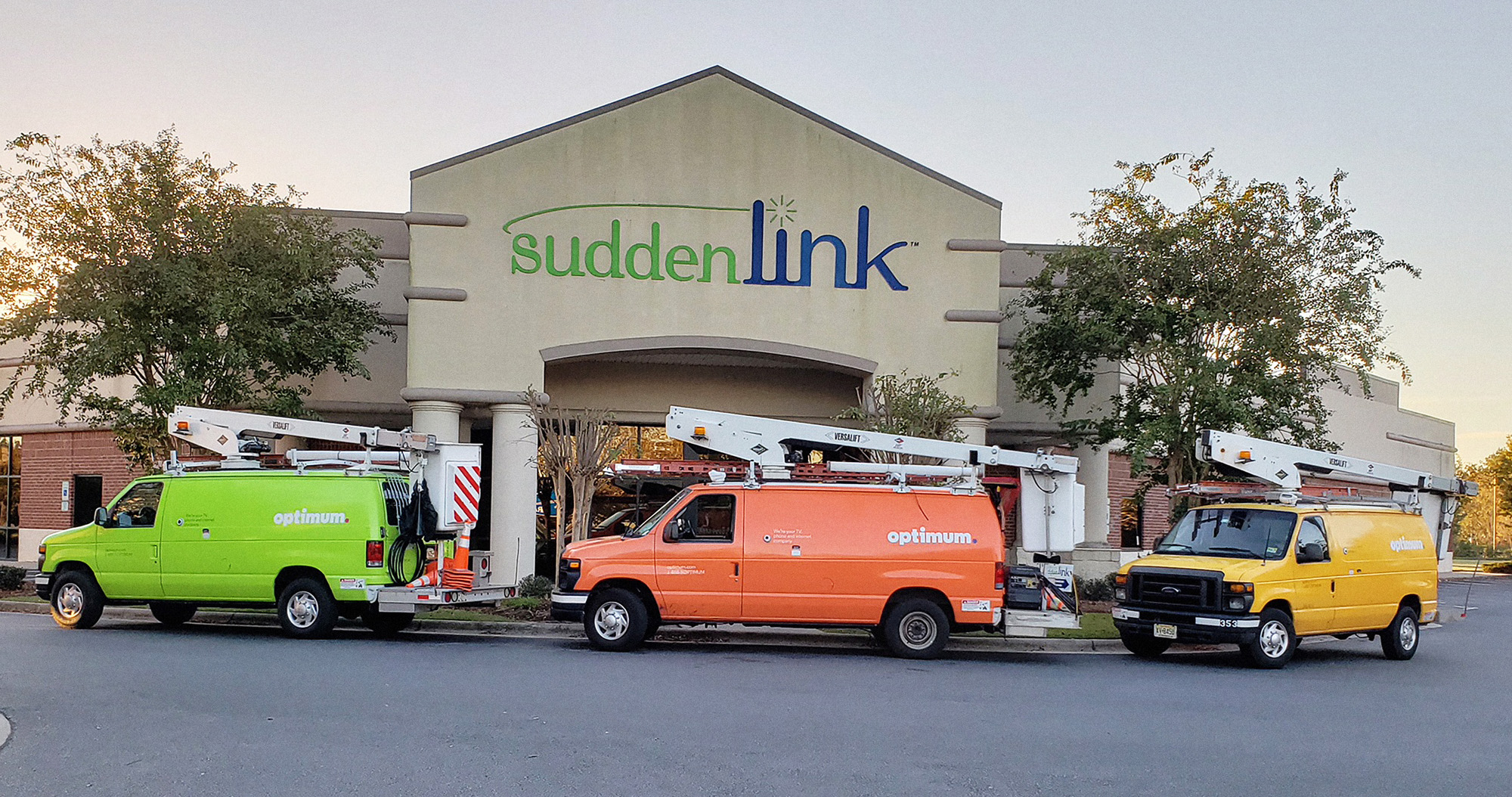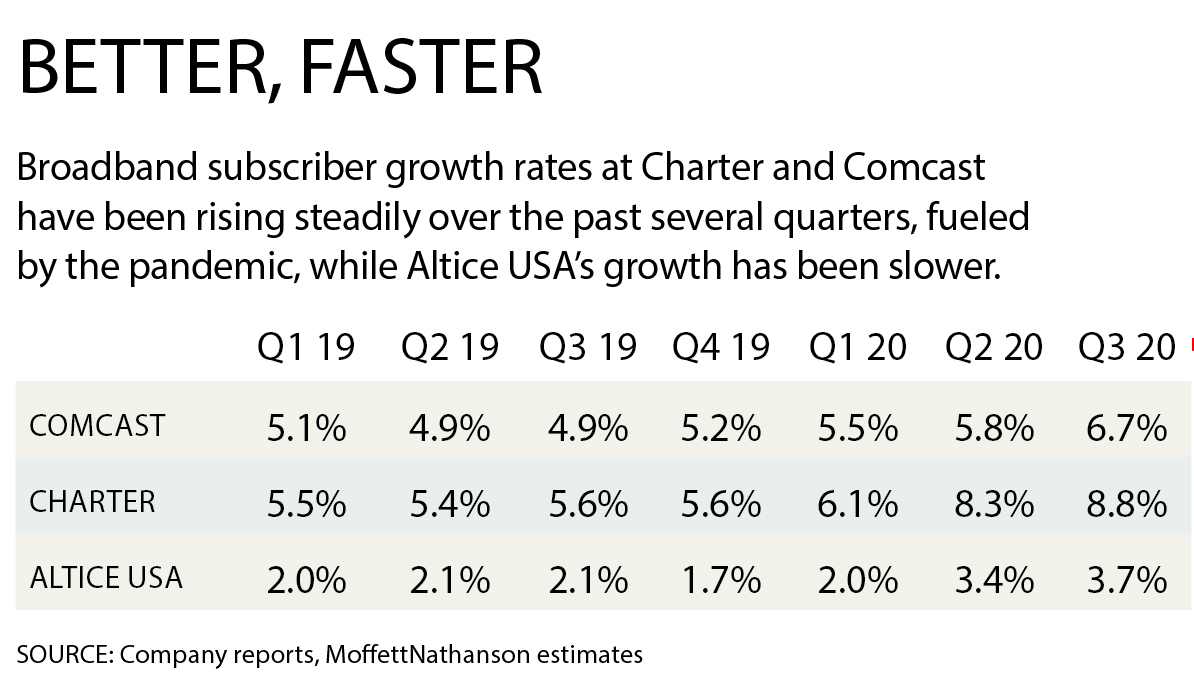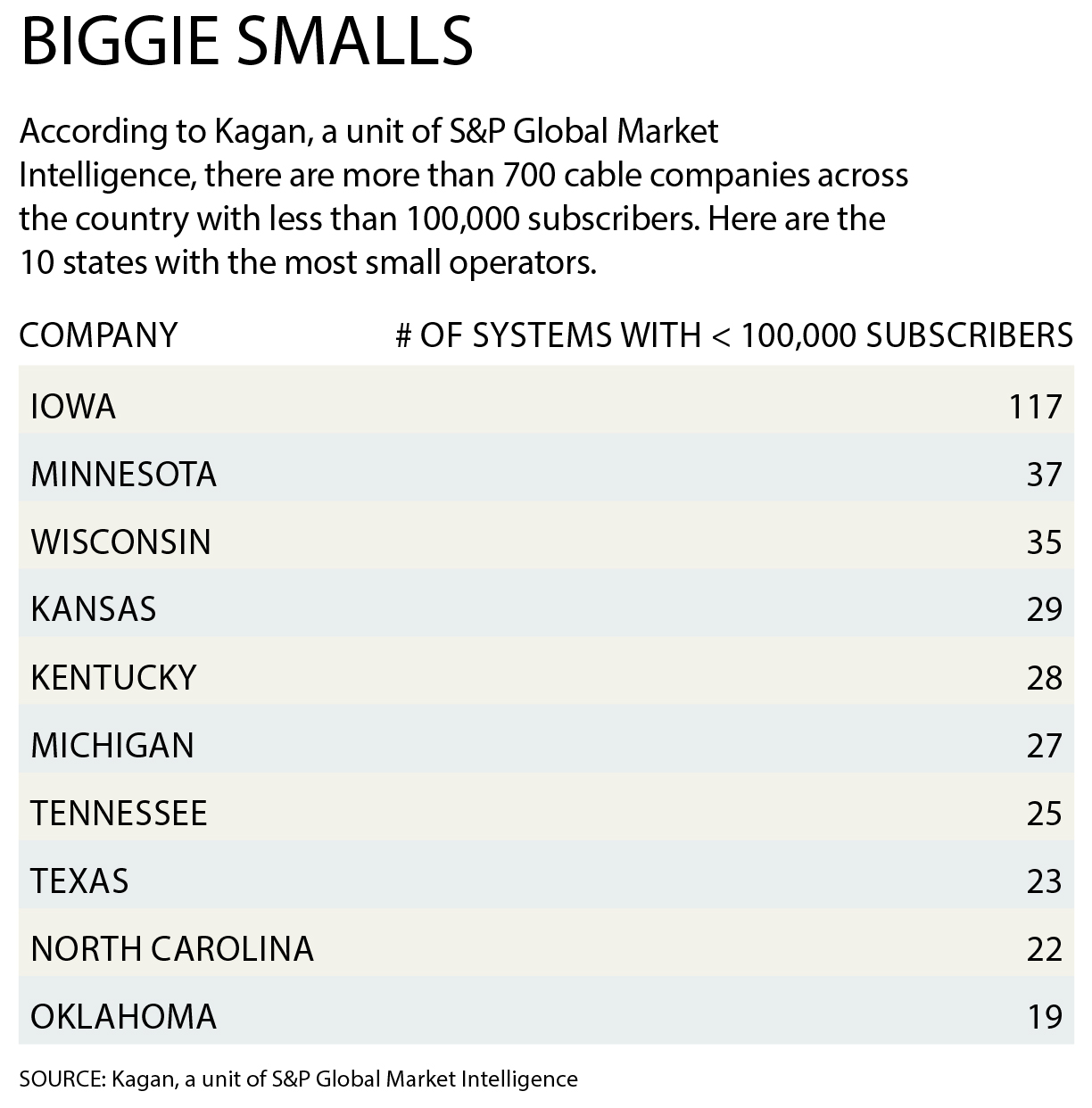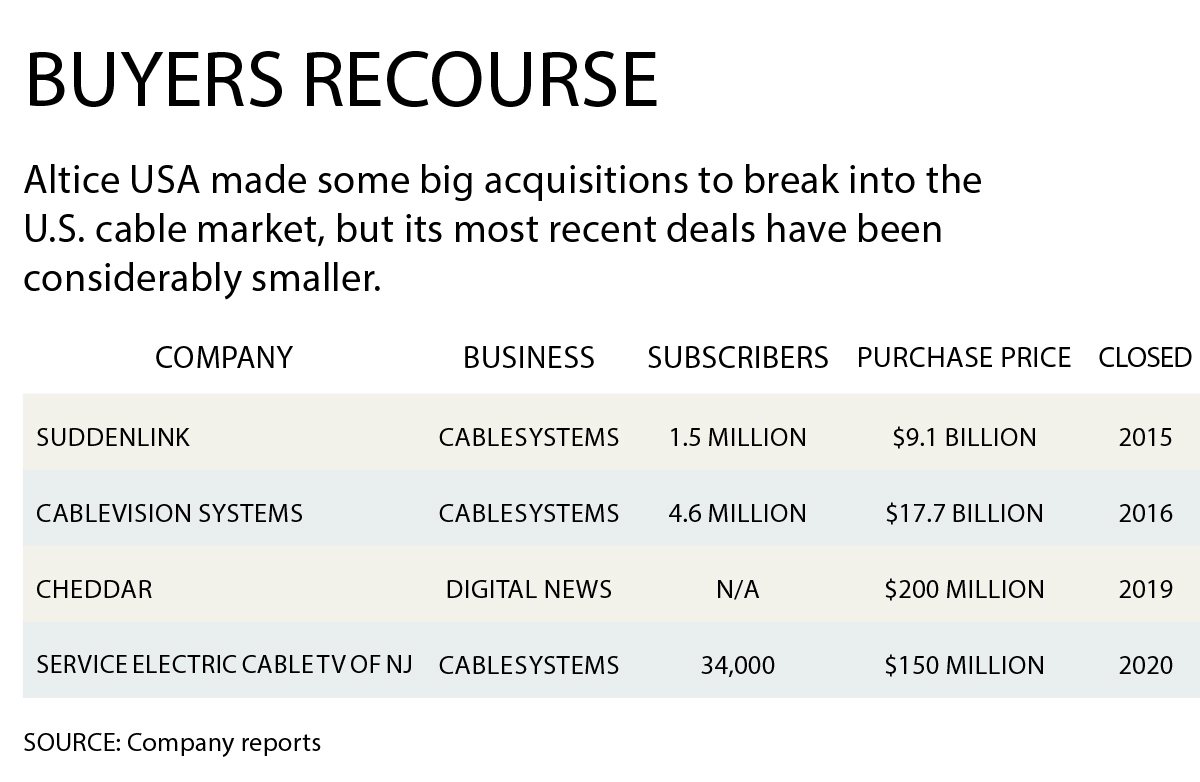Altice USA: We’re Still on the Hunt
With Atlantic Broadband looking less and less likely, operator focuses on other, smaller targets

With its $3.9 billion pursuit of Atlantic Broadband nearly just a memory, Altice USA is turning its focus to smaller acquisitions, telling analysts it has a “handful” of potential targets in mind as it looks to boost growth.
Altice USA launched a $3.6 billion offer for Atlantic Broadband — part of a larger $7.8 billion joint bid with Rogers Communications for its parent, Canadian telecom operator Cogeco — on Sept. 2. After Cogeco’s controlling shareholder rejected that deal, Altice and Rogers increased their offer to $8.4 billion ($3.9 billion for ABB) on Oct.18, which was again summarily rejected.

On its Oct. 29 conference call with analysts to discuss third-quarter results, Altice USA CEO Dexter Goei noted that there is still time for Cogeco to change its mind — it had imposed a Nov. 18 deadline for Cogeco to accept the deal — but he held out little hope.
“We’re very cognizant that the controlling shareholder needs to be acquiesced,” Goei said on the conference call. “Based on his rhetoric and his statements to date, I think it’s fair to say that there is a low chance of us collectively with Rogers being able to move forward on this project. Formally, we’ve got until Nov. 18, so we’ll see if anything shakes loose.”
The apparent failure of the Cogeco bid doesn’t mean Altice USA is giving up on M&A. On the conference call, Goei pointed to a handful of potential targets, adding that interest is growing among small operators to sell out.
“We are out there looking at a handful of things,” Goei said, adding that given Altice USA’s 21-state footprint, there are several opportunities to find small systems contiguous to its operating area.

Small-Market Opportunities
The smarter way to stay on top of the multichannel video marketplace. Sign up below.
While the choices may be few and far between in Altice’s Optimum footprint — the former Cablevision Systems operations in New York, New Jersey and Connecticut — the opportunities appear greater in its Suddenlink division. Suddenlink, which Altice purchased in 2015 for $9.1 billion, operates in 14 states and has been a “sneaky” source of organic growth for the company, according to Bernstein media analyst Peter Supino.
In a research report, Supino estimated Altice would add about 90,000 broadband customers in 2021, 85,000 in 2022 and 70,000 in both 2023 and 2024, with the bulk of those gains (66,000; 67,000; 69,000 and 71,000) coming from Suddenlink.
“Why would a decades-old business in smaller midwestern and southeastern cities offer a growth opportunity?” Supino asked in his report. “Amidst steadily rising demand for bandwidth — a powerful trend long before COVID-19 — and with relentless cable upgrades overwhelming DSL [digital subscriber line] competition, small-town cable has become a quasi-monopoly on Internet service.”
Altice USA already showed its appetite for smaller systems when it purchased Service Electric Cable TV of New Jersey in July for $150 million. In its Q3 conference call, Goei said Service Electric has proven to be a strong purchase, adding that Altice has been able to grow the unit with minimal eff ort. Service Electric has about 30,000 subscribers.
“It’s not necessarily that easy to unlock all of this, but given the environment, given the interest rate environment, given that size does really matter here in terms of getting operational synergies and investing heavily in technology and customer service, it is starting to percolate that some of the smaller operators, the mom-and-pop guys, are looking to deal,” Goei said.
He pointed to Service Electric, which needed some investment in its network and didn’t have a consistent marketing strategy when Altice first bought it, but has responded well with minimal effort.
“We’re seeing a lot of low-hanging fruit just by adding two or three additional salespeople both on the SMB [small and medium-sized businesses] side and the B2B side, that’s been very lucrative for us just increasing penetration out there, bringing new products, and we’re upgrading the network as quickly as we can,” Goei said. “Everything that we are able to get our hands on in terms of M&A opportunities will be the best use of our capital.”
Altice also has the financial wherewithal to do a deal. In addition to generating a ton of free cash flow — $458 million in Q3, 48% above consensus and three times the prior year figure — the cable operator is expected to receive about $1.1 billion in cash from the sale of a 49% interest in its LightPath business telecom unit to Morgan Stanley Infrastructure Partners. That deal is expected to close in the fourth quarter.

Little Guys Seek Deals
According to sources in the cable M&A community, smaller operators are indeed looking to do deals. In addition, TPG, the Dallas-based private equity firm that owns RCN, Grande Communications, EnTouch Communications and Wave Broadband, agreed to sell its systems with more than one million customers to private equity group Stonepeak Infrastructure Partners and Patriot Media in a deal valued at about $8.1 billion, including the assumption of debt.
TPG, which put the assets on the block in September, purchased the systems in three separate deals, agreeing to pay $2.25 billion for RCN and Grande in 2016, and completing its $2.36 billion purchase of Wave in 2018. It purchased Entouch in September, adding 22,000 customers.
While most of the attention is heaped on large, publicly traded cable operators, the industry is still peppered with small, family-owned operations that dot the country. According to Kagan, a unit of S&P Global Market Intelligence, there are more than 700 cable operators across the country with less than 100,000 subscribers, with a number of those companies located in states where Suddenlink operates, like Kansas (29), Kentucky (28) and Texas (23).
One small operator that asked not to be named added that the number of companies willing to do deals isn’t necessarily increasing, it’s just that as other growth opportunities fade, they are becoming better noticed.
“To some extent, I think those deals in the smaller operator space have always existed,” the operator said. “I don’t think we have seen any particular uptick.”
According to analysts, while Altice USA’s growth strategy includes edging out its current footprint and driving penetration rates in its existing territory, it is a bit hamstrung by its popularity in its bigger markets. Penetration rates in its Optimum service footprint — basically metropolitan New York — are more than 50%. While opportunities are greater in its more rural Suddenlink markets, with penetration rates of 30% to 40%, buying systems still appears to be the fastest way for Altice to achieve its goals.
In a research note, MoffettNathanson principal and senior analyst Craig Moffett acknowledged Altice’s M&A desires, adding that a combined strategy of organic growth and M&A deals are what will most likely drive the stock in the future.

Growth Strategy
“Altice clearly wants to grow, not only through acquisition, but also by edging out into unserved adjacent rural markets,” Moffett wrote. “And that’s precisely what the market wants.”
Barclays Research media analyst Kannan Venkateshwar agreed, adding that while Altice does have some strong growth drivers, its high penetration rates and industry-high ARPU (average revenue per user) limit visibility in the long term.
“Consequently, we do believe [Altice USA] is likely to more actively seek smaller cable deals over the course of the next year, to extract growth from synergies instead,” he wrote.
After an impressive 66% run in 2019, Altice USA shares have slid about 3% this year. A lot of the pressure on the stock is due to investor concerns that its nearly fully penetrated in the competitive New York market.
“Anything that Altice can do to geographically diversify away from their legacy Optimum footprint would be welcomed by the market, even if they have to pay a premium to do it,” Moffett wrote.
Altice had strong Q3 results — broadband growth at 26,000 subscribers was above consensus expectations — in line with other larger operators. Altice USA also managed to convert a large chunk of broadband subscribers that were receiving service as part of the Keep America Connected pledge, where most providers agreed not to disconnect broadband service during the pandemic. Altice said that during the second quarter about 10,000 customers under the KAC pledge were past due on payments for more than 90 days. Now that number of delinquent accounts is under 3,000, the company said.
Broadband Boom
Altice USA’s broadband growth comes as larger companies continue to rack up high-speed internet subscribers. The country’s largest cable operator, Comcast, added 633,000 broadband customers in Q3, its best quarter for broadband growth ever. No. 2 Charter Communications added 537,000 broadband customers in Q3, and has gained more than 1.4 million broadband customers in the past 12 months.
On a conference call with analysts, Comcast chairman and CEO Brian Roberts marveled at the continued momentum for the broadband product, which most cable operators began offering in earnest at the turn of the 21st century.
“To have the best broadband quarter in the company’s history sitting here in 2020, when it’s a 20-year-old product, give or take, is a pretty dramatic and amazing statement in my opinion,” Roberts said on the call.
Broadband growth has been robust to say the least during the pandemic. According to Moffett, high-speed internet growth rates at Charter have been between 6.1% and 8.8% for the past three quarters, while Comcast has ranged between 5.5% and 6.7% growth. Altice, which has a much smaller and more highly penetrated customer base, grew between 2% and 3.7% over the past three quarters.
While Altice, like its larger peers, is building out its footprint to include homes previously not receiving service, that won’t likely be enough on its own to move the growth needle. Altice said it is extending its network to about 150,000 new homes per year. Charter is building out between 500,00 and 600,000 homes and Comcast is doing about the same. In a conference call with analysts Oct. 30, Charter chief financial officer Christopher Winfrey said while the effect of the build outs has had a “meaningful” impact on broadband subscriber growth, it hasn’t been “material.”
“It’s helpful, but it’s not the material driver for our growth,” Winfrey said. That would mean for companies like Altice, acquisition — any acquisitions — may be the only way to turn the corner on growth fast enough to satisfy Wall Street.
“To be sure, waking up to news that Altice has bought a small operator many people won’t have ever heard of before isn’t as sexy as waking up to news that they’ve been bought by Charter would be,” Moffett wrote. “But it is infinitely more likely, and Altice shares are cheap enough that buying a small operator or two might be all that is needed to finally close the valuation gap.”
Mike Farrell is senior content producer, finance for Multichannel News/B+C, covering finance, operations and M&A at cable operators and networks across the industry. He joined Multichannel News in September 1998 and has written about major deals and top players in the business ever since. He also writes the On The Money blog, offering deeper dives into a wide variety of topics including, retransmission consent, regional sports networks,and streaming video. In 2015 he won the Jesse H. Neal Award for Best Profile, an in-depth look at the Syfy Network’s Sharknado franchise and its impact on the industry.

